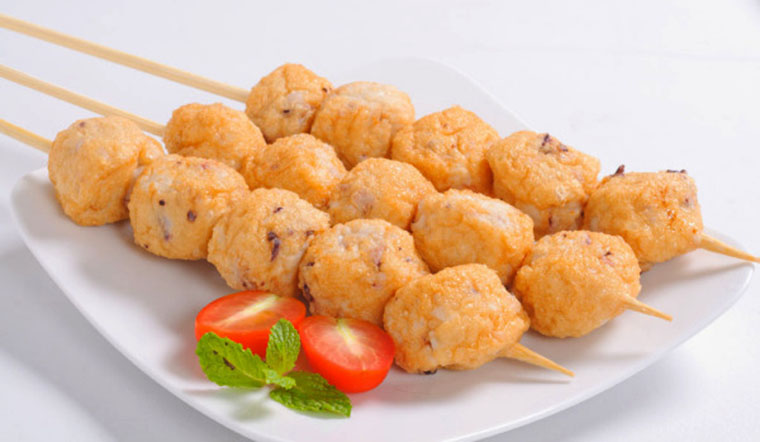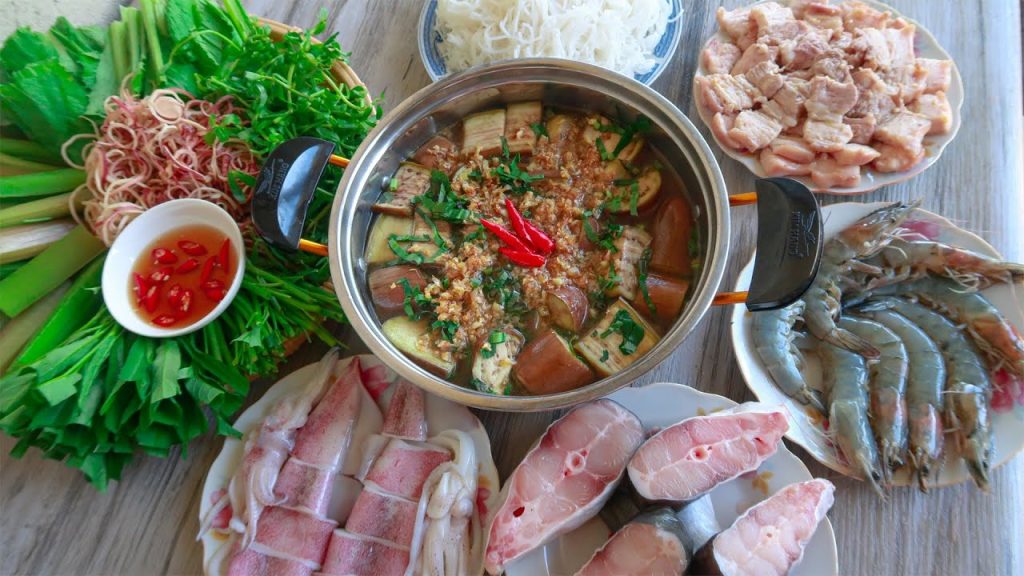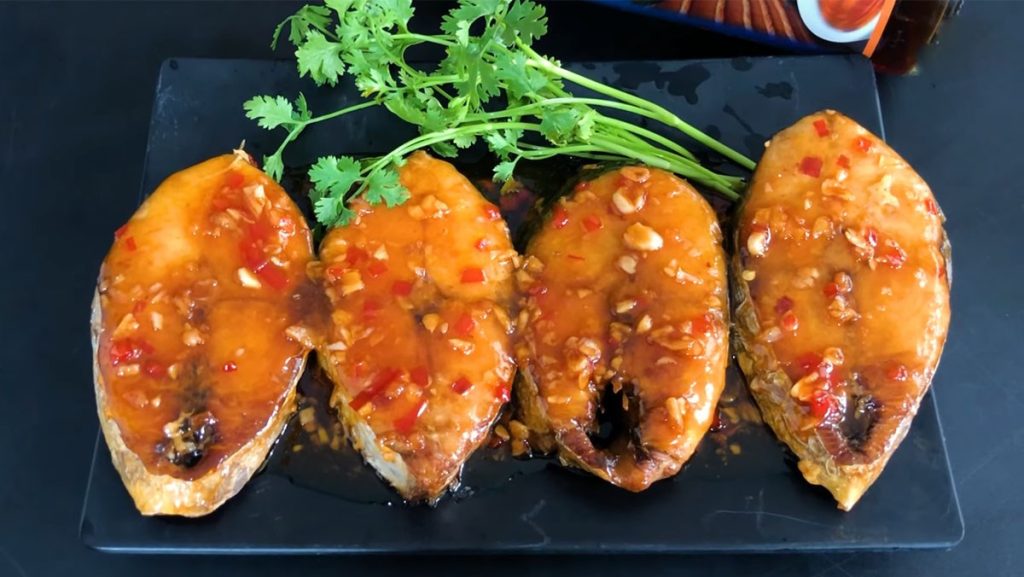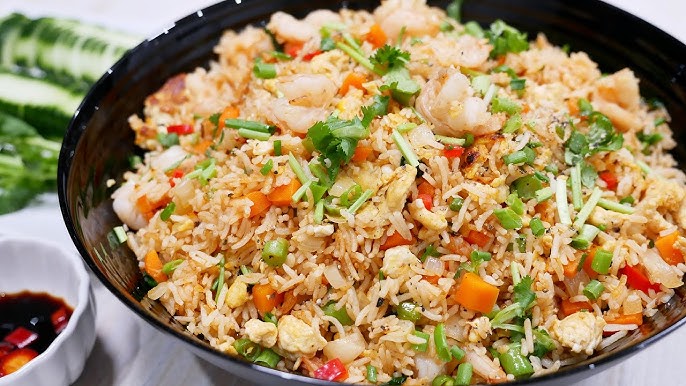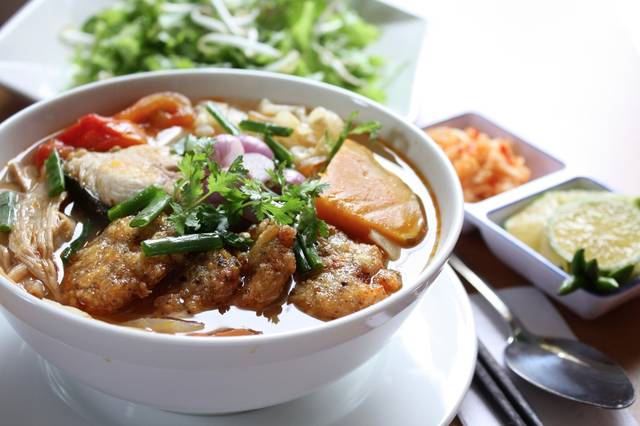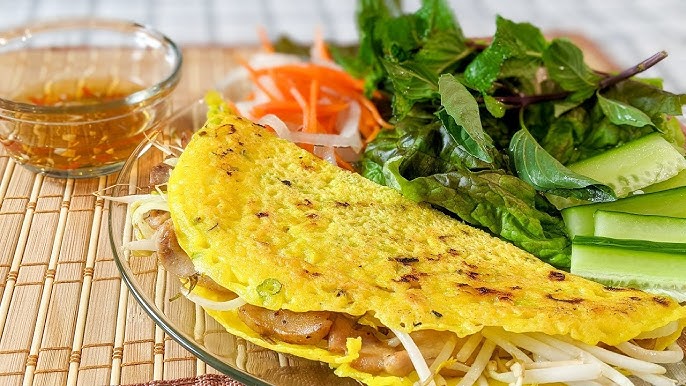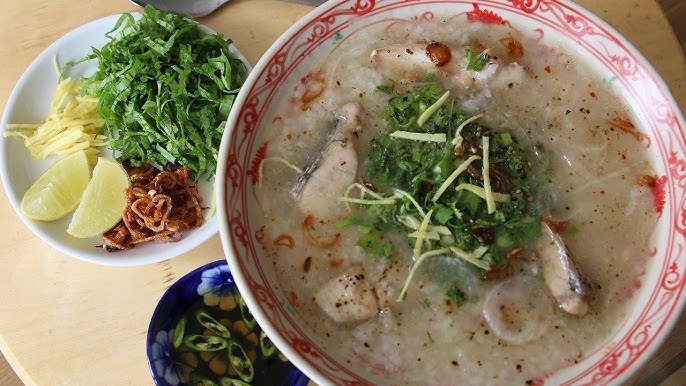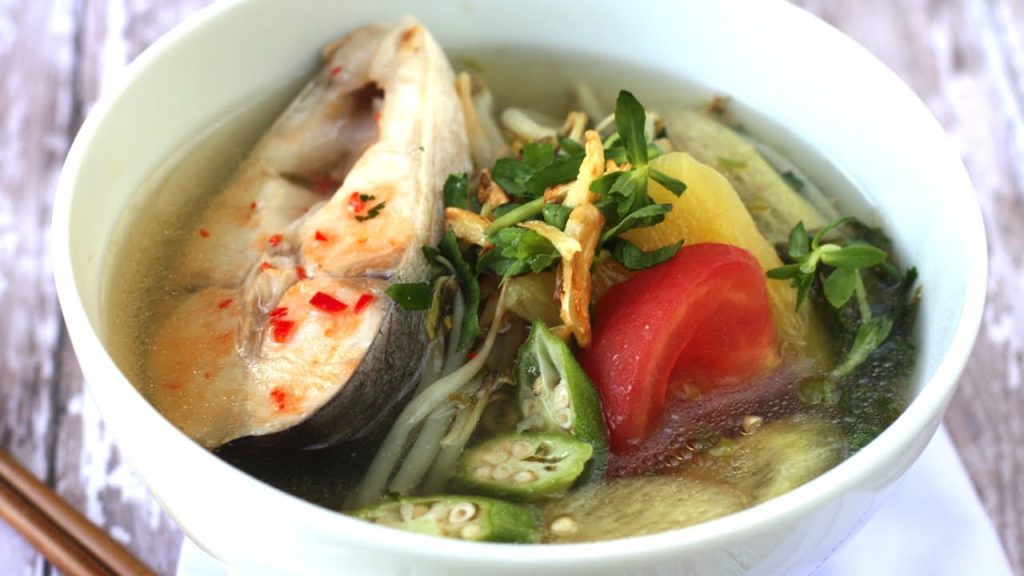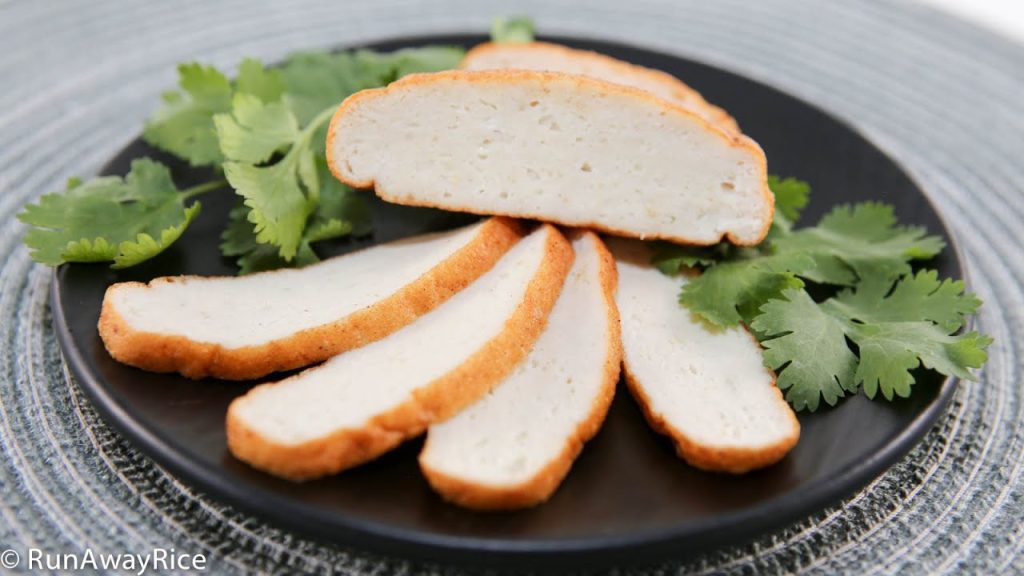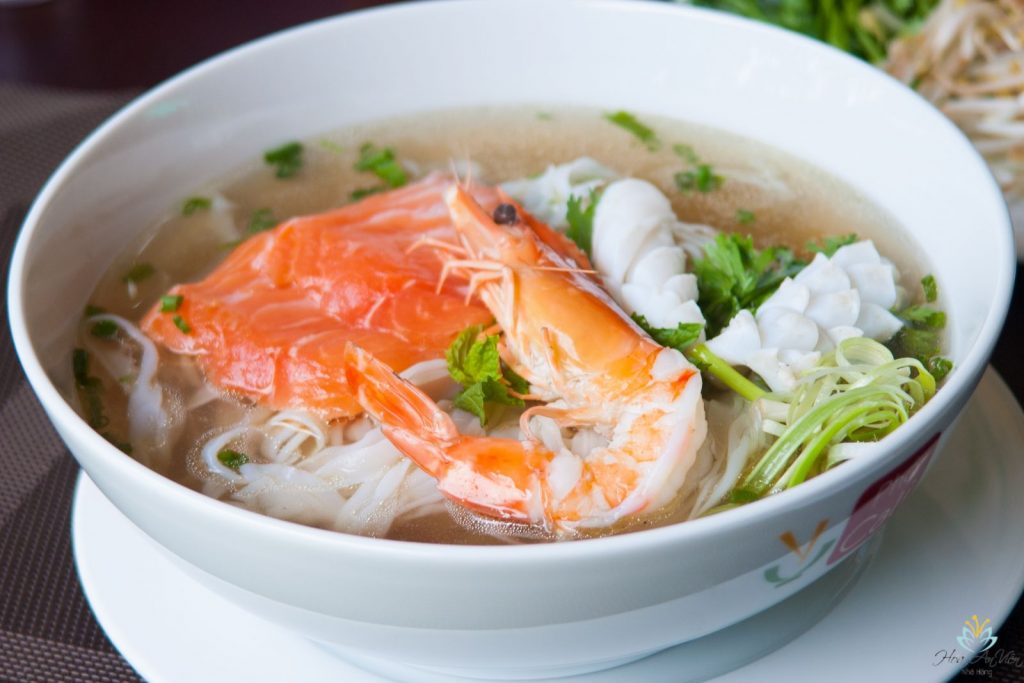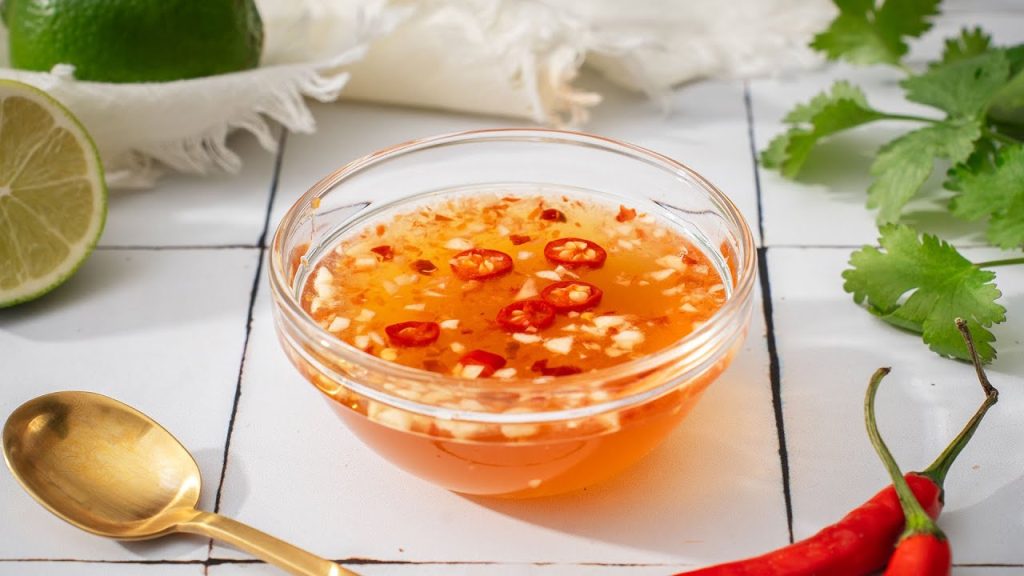Vietnamese fish balls, a beloved staple in the rich tapestry of Vietnamese cuisine, embody the essence of culinary tradition and innovation. These delectable morsels, known for their versatility and savory flavor, serve as a testament to the ingenuity of Vietnamese cooking. Crafted from finely minced fish combined with a blend of aromatic herbs and spices, Vietnamese fish balls can be found simmering in the broths of noodle soups, bobbing in hot pots, or served as a flavorful addition to various dishes across Vietnam and beyond.
Beyond their immediate taste appeal, fish balls carry a cultural significance, representing the fusion of local ingredients and time-honored cooking techniques passed down through generations. As we delve into the world of Vietnamese fish balls, we uncover not just the method of their preparation but also the stories they carry within each bite—a journey through the heart of Vietnamese culinary heritage, inviting enthusiasts and newcomers alike to explore and savor its flavors.
Table content
- How To Make Vietnamese Fish Balls?
- Varieties and Innovations
- Cultural Significance and History
- Advanced Cooking Techniques and Tips
- Serving Suggestions and Pairing Ideas
- Nutritional Benefits and Considerations
- Preservation and Storage Tips
- Avoiding Common Mistakes
- Conclusion: Vietnamese Fish Balls
- Vietnamese Fish Balls
How To Make Vietnamese Fish Balls?
Making traditional Vietnamese fish balls requires care and technique. Here is a step-by-step guide:
- Prepare the fish paste
- Choose fresh white fish fillets like catfish, bass, or cod
- Remove any bones or skin
- Cut the fillets into chunks
- Use a food processor to blend the fish into a smooth paste
- Tip: Keep the fish very cold while working to prevent the fat from smearing
- Season the paste
- For every 1 lb of fish, add:
- 2 tbsp fish sauce
- 2 tsp sugar
- 2 tbsp finely chopped shallots
- 1 tsp black pepper
- 1/2 tsp salt
- Mix well to fully incorporate
- For every 1 lb of fish, add:
- Shape into balls
- Scoop up 1 tbsp of paste
- Roll between palms into a smooth ball
- Make all fish balls uniform in size
- Tip: Wet hands periodically to prevent sticking
- Boil the fish balls
- Bring a pot of water to a boil
- Gently drop fish balls into the water
- Boil for 5-7 minutes until the balls float
- Remove with a slotted spoon
- Tip: Don’t overcook or the fish balls may become rubbery
Varieties and Innovations
While traditional fish balls contain only fish, many delicious variations exist:
- Fish roe fish balls – Fish roe added to the paste brings pops of flavor
- Minced pork fish balls – Ground pork makes the balls juicier
- Salted egg yolk fish balls – Salted egg yolk custard creates a rich, creamy filling
The possibilities are endless, showcasing the creativity of Vietnamese cuisine.
Cultural Significance and History

Fish balls have their origins in Southern China and were likely introduced to Vietnam by Chinese immigrants. They became a part of traditional Vietnamese food culture by the 19th century.
As a inexpensive, protein-rich food made from locally available fish, they were an important staple for both home cooks and street food vendors. They remain essential to Vietnamese cuisine today.
Advanced Cooking Techniques and Tips
With practice, one can master next-level fish ball and cake preparation:
- Velveting – Lightly dusting fish with tapioca starch before grinding creates an especially smooth, tender texture.
- Pan-frying – After boiling, pan-frying instead of boiling further enhances the exterior texture.
- Skewering – Threading fish balls onto skewers after cooking allows for easy serving.
- Broth infusion – Steeping cooked fish balls in Vietnamese noodle soup broth infuses them with extra flavor.
- Two-stage frying – Double frying fish cakes makes them perfectly crispy outside and soft inside.
Serving Suggestions and Pairing Ideas
Fish balls and cakes are extremely versatile. Ways to serve:
- In pho, Vietnam’s traditional noodle soup
- As appetizers with a dipping sauce of nuoc cham or hoisin
- Added to bun cha, vermicelli bowls
- Alongside rice and vegetables as a light meal
- Served over vermicelli noodles, topped with crispy shallots
- Stuffed into spring roll rice paper wraps
- On top of salad with lettuce, herbs, nuoc cham dressing
- As a pizza topping instead of sausage
Nutritional Benefits and Considerations

Fish balls and cakes have many nutritional upsides:
- High in protein to support muscle growth and heart health
- Provide healthy fats like omega-3s
- Are low in saturated fat when made with lean fish
- Contain essential minerals and vitamins like selenium, Vitamin D, and B vitamins
- Offer a low calorie, low carb option when avoiding rice or noodles
Enjoy them in moderation as part of a balanced diet. Those with seafood allergies will need a substitute.
Preservation and Storage Tips
To maintain freshness:
- Store fish balls and cakes in an airtight container in the refrigerator
- Use within 2-3 days for best quality
- Do not freeze more than 1 month, as texture will degrade
- Reheat gently in broth, sauce, or steamer to prevent rubberiness
With proper storage, homemade fish balls and cakes can be enjoyed all week long.
Avoiding Common Mistakes
Here are some common fish ball and cake mishaps and how to prevent them:
- Too mushy – Don’t overprocess the fish paste. Check frequently for a smooth, not pureed texture.
- Too firm – Insufficient chopping or cooking time can lead to dense, rubbery texture.
- Bland flavor – Increase seasoning to desired taste. Add extras like fish roe or pork for more complexity.
- Brittle exterior – Fry with oil at proper temperature. Don’t overcrowd the pan.
- Uneven cooking – Ensure size uniformity. Turn frequently while frying.
With practice, these potential pitfalls are easily avoided.
Conclusion: Vietnamese Fish Balls
In summary, Vietnamese fish balls and cakes are flavorful culinary delicacies with a storied history. With a few simple techniques, anyone can craft tasty fish balls and cakes at home. Experiment with different recipes and cooking methods for best results. Include these versatile, protein-packed treats as part of a varied, healthy diet.

Ingredients
- Fish:
- -500g white fish fillets (cod, pollock, hake, or a combination)
- -250g white fish fillets + 250g shrimp (for a shrimp and fish combination)
- Seasonings:
- -1 tbsp fish sauce
- -1 tsp salt
- -1 tsp white pepper
- -1 tsp sugar
- -1/2 tsp onion powder (optional)
- -1/4 tsp garlic powder (optional)
- Binder:
- -2 tbsp tapioca starch (or cornstarch)
- -1 egg white (for a lighter texture)
- Aromatics (optional):
- -1 shallot, finely minced
- -1 clove garlic, minced
- For cooking:
- -Water or broth
Instructions
- Prepare the fish: Wash and pat the fish fillets dry. Cut them into small pieces. You can pulse them a few times in a food processor for easier blending, but be careful not to over-process.
- Season the fish: In a large bowl, combine the fish with fish sauce, salt, white pepper, sugar, onion powder (if using), garlic powder (if using), and minced aromatics (shallot and garlic, if using). Mix well to distribute the seasonings evenly.
- Add the binder: Add the tapioca starch (or egg white) to the fish mixture and mix until well incorporated. The mixture should become sticky and hold its shape when pinched.
- Form the fish balls: Wet your hands to prevent sticking. Scoop out a small amount of the fish mixture and roll it into a ball between your palms. Aim for a uniform size, around 1-inch in diameter. Repeat with the remaining mixture.
- Cook the fish balls: There are two ways to cook the fish balls
- -Poaching: Bring a pot of water or broth to a gentle simmer. Carefully drop the fish balls into the simmering liquid and cook for 10-15 minutes, or until they float to the surface and become opaque throughout.
- -Frying (optional): Heat oil in a pan or pot over medium heat. Once hot, carefully add the fish balls and fry until golden brown on all sides. This method takes about 5-7 minutes.
- Serve: Enjoy Vietnamese fish balls immediately while hot. They can be served on their own with a dipping sauce like nuoc cham, or added to soups, noodle dishes, or stir-fries.
Notes
- For a smoother texture, you can pulse the fish mixture a few times in a food processor after adding the seasonings. However, be careful not to over-process as it can make the fish balls tough.
- If the mixture feels too wet and difficult to handle, add a little more tapioca starch, 1 teaspoon at a time, until it reaches the desired consistency.
- You can experiment with different types of fish or a combination of fish and shrimp for a richer flavor.
- Leftover cooked fish balls can be stored in an airtight container in the refrigerator for up to 3 days or frozen for longer storage.
Nutrition Facts
Vietnamese Fish Balls
Serves: 2-3 people
|
Amount Per Serving: About 10-12 fish balls
|
||
|---|---|---|
| Calories | 100-150 | |
| % Daily Value* | ||
| Total Fat 5-8g | 7.7% | |
| Saturated Fat 5-8g | 25% | |
| Trans Fat 0g | ||
| Cholesterol 25-35mg | 8.3% | |
| Sodium 250-400mg | 10.4% | |
| Total Carbohydrate 5-10g | 1.7% | |
| Dietary Fiber 1-2g | 4% | |
| Sugars 1g | ||
| Protein 10-15g | ||
| Vitamin A Negligible | Vitamin C Negligible | |
| Calcium 50-70mg | Iron 1-2mg | |
* Percent Daily Values are based on a 2,000 calorie diet. Your daily values may be higher or lower depending on your calorie needs.
Vietnamese food recipe

Hello! I’m Christine Ha – a food nerd in love with eating, cooking, photography, science, and culture.
Vietnamese food was always on the table when I was a kid, but I didn’t really care for it until my late teens (what a waste!). I was a super picky eater and mostly just wanted fast food. Somewhere down the line I flipped a switch, and now home-cooked food is something I appreciate so much more. ⮕About me

